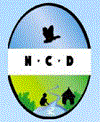Country/territory: Senegal
IBA criteria met: A1, A4, B1a, B3a, B3b (2019)
For more information about IBA criteria, please click here
Area: 56,000 hectares (560.00 km2)
Nature - Communautés - Développement

| IBA conservation status |
| Year of assessment (most recent) |
State (condition) |
Pressure (threat) |
Response (action) |
| 2022 |
not assessed |
very high |
medium |
| For more information about IBA monitoring, please click here |
Site description (2001 baseline)
The Parc National des Oiseaux du Djoudj (PNOD; 16,000 ha) forms the core of this site, which consists of an inland delta in a shallow depression lying within the flood-plain of the Senegal river, in north-western Senegal, on the border with Mauritania, where it is contiguous with Diawling National Park (MR021). The park lies about 60 km north-east of the city of St Louis and some 20 km north-west of the Ndiaël basin (site SN002). Objectives for the park include environmental education and promotion of ecotourism as well as wildlife conservation.
The PNOD consists of an extensive complex of seasonally inundated brackish lakes and pools lying on impermeable saline soils and linked by channels to a branch of the Senegal river. It lies within the Sahel zone at sea-level and the terrestrial vegetation consists of
Tamarix and
Acacia savanna with a ground layer of herbs and grasses. Areas subjected to inundation support
Typha,
Sporobolus robustus,
Phragmites and
Nymphaea. The surrounding landscape outside the park is flat, open thorn-bush savanna used for livestock-rearing, hunting and some rice cultivation. There are seasonally inundated and marshy areas and small channels, especially adjacent to the river, and some of these are extremely important for birds in some years or at certain times of year, depending on flood and rain water-levels. These additional areas are therefore incorporated in the IBA and include an area known as ‘Débi’ to the north of the park and the ‘Zone d’intérêt cynégétique’ (or hunting zone) du Djeuss to the south. The IBA also extends downstream of the park along the river as far as the Maka Diama dam. Most of these areas are incorporated within the management plan for the PNOD and its buffer zone (see ‘Conservation issues’).
Key biodiversity
See Box for key species. The park is internationally important for breeding, staging and wintering waterbirds. The Wetlands International African Waterbird Census has recorded more than 200,000 waterbirds in January every year since 1992 (except 1996), with peaks of over 400,000 in 1992 and 1997. Around 95% of these numbers (i.e. 170,000 or more in most years) are migrant Palearctic wildfowl (Anatidae). Phoenicopterus minor has occurred regularly, and in increasing numbers in the park from 1993 (2,800 birds) to 1996 (11,655) with maximum counts of 15,000 and 46,500 in 1990. Small numbers of wintering Aythya nyroca have been recorded sporadically, with a maximum of 230 in 1972 and one record of 50 in 1991/92 (five-year mean of 12). Falco naumanni is a regular winter visitor and occurs on passage throughout the lower Senegal valley; it is often recorded from drier areas outside the park boundary. Numbers were highest in the 1950s and 1960s, but several hundred were seen more than once in the 1990s, peaking at 3,200 in 1994. Prinia fluviatilis is recorded as resident in the park, but there are no other details.
Three other globally threatened species are recorded from the site. For
Marmaronetta angustirostris there is one breeding record from 1979, but only sporadic individual sightings subsequently.
Circus macrourus is apparently declining in comparison with previous decades; the maximum recent record is 15 birds in 1994.
Acrocephalus paludicola was captured regularly in the reeds in the delta in the 1960s and 1970s and there are occasional more recent records from the 1980s and 1990s.
The site also holds at least eight of the 12 species of the Sahel biome (A03) which occur in Senegal (see Table 2), including
Ardeotis arabs, which is still seen regularly and breeds in the park, despite a marked decline in the north of the country since the 1960s. In addition to those in the Box, other waterbird species recorded in significant numbers close to IBA thresholds include
Plegadis falcinellus,
Platalea alba,
Glareola pratincola and
Limosa limosa. There is one record (not repeated) of 37,760
Dendrocygna bicolor in the park. Breeding birds include
Pelecanus onocrotalus,
Anhinga rufa (maximum 100 nests) and mixed colonies of
Egretta garzetta,
Casmerodius albus,
Nycticorax nycticorax,
Platalea alba,
Mesophoyx intermedia and
Threskiornis aethiopica. Many migratory passerines also use the site, e.g. roosts of up to 250,000
Motacilla flava. The site is closely linked with other wetlands throughout the delta of the Senegal river on both the Senegalese (e.g. sites SN002 to SN005 inclusive) and Mauritanian sides. Wetland species move between sites to forage and roost, and breeding numbers in any one year may also depend on relative water-levels in sites such as Djoudj and, in Mauritania, the Aftout-es-Saheli wetland and the Diawling Ramsar Site. The African Waterbird Census has covered all these major sites since 1995 and recorded considerable movements between PNOD and Diawling in particular. Ongoing counts should further demonstrate the complementarity of these sites and allow for fuller examination of numbers and movements of birds in relation to water-levels.
Non-bird biodiversity: Mammals include a small number of reintroduced Trichechus senegalensis (VU), which occurred naturally in the park until the 1980s, Gazella dorcas (VU) and G. rufifrons (VU).
Recommended citation
BirdLife International (2024) Important Bird Area factsheet: Djoudj wetlands (Senegal). Downloaded from
https://datazone.birdlife.org/site/factsheet/djoudj-wetlands-iba-senegal on 23/12/2024.